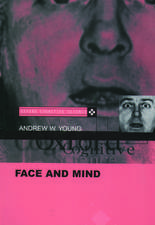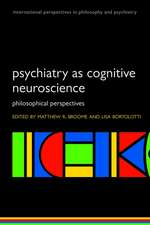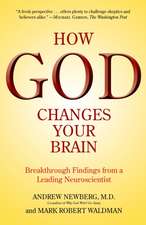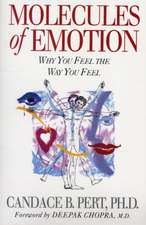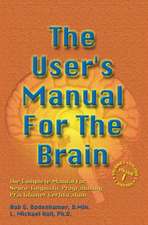Invisible Heroes: Survivors of Trauma and How They Heal
Autor Belleruth Naparstek Robert C. Scaeren Limba Engleză Paperback – 30 noi 2005
Now there is new hope for the millions affected by posttraumatic stress disorder (PTSD). Drawing on more than thirty years’ experience as a therapist and on the most recent cutting-edge research, Belleruth Naparstek presents a clinically proven program for recovery using the potent tool of guided imagery. She reveals how guided imagery goes straight to the right side of the brain, where it impacts the nonverbal wiring of the nervous system itself, the key to alleviating suffering.
Filled with the voices of real trauma survivors and therapists whose lives and work have been changed by this approach, Invisible Heroes offers:
• New understanding of the physical, cognitive, emotional, and behavioral effects of PTSD, who is most susceptible, and why symptoms can get worse rather than better with time
• Important insights into how the brain and body respond to trauma, why conventional talk therapy can actually impede recovery, and why the nonverbal, image-based right brain is crucial to healing
• A step-by-step program with more than twenty scripts for guided-imagery exercises tailored to the three stages of recovery, from immediate relief of anxiety attacks, flashbacks, nightmares, and insomnia, to freedom from depression and isolation, to renewed engagement with life
• A helpful guide to the best of the new imagery-based therapies, and how to incorporate them into an overall recovery plan
Belleruth Naparstek concludes with the inspiring words of survivors who have found their way back to peace, purpose, and
a deep joy in living. Her compassionate, groundbreaking book can lead you and
those in your care to the same renewal and healing.
From the Hardcover edition.
Preț: 118.73 lei
Nou
Puncte Express: 178
Preț estimativ în valută:
22.73€ • 24.69$ • 19.10£
22.73€ • 24.69$ • 19.10£
Carte disponibilă
Livrare economică 31 martie-14 aprilie
Preluare comenzi: 021 569.72.76
Specificații
ISBN-13: 9780553383744
ISBN-10: 0553383744
Pagini: 377
Dimensiuni: 152 x 226 x 23 mm
Greutate: 0.39 kg
Editura: Bantam Books
ISBN-10: 0553383744
Pagini: 377
Dimensiuni: 152 x 226 x 23 mm
Greutate: 0.39 kg
Editura: Bantam Books
Recenzii
"The bad news is that stress-related disorders are epidemic in our society. The good news is the new array of therapies that are truly effective in healing them. INVISIBLE HEROES is a package of hope for anyone whose life is compromised by the insidious effects of emotional trauma. This is one of those blessed books that deserves to be called life-changing."--Larry Dossey, M.D., author of Healing Beyond the Body, Reinventing Medicine and Healing Words
"Belleruth Naparstek is both a compassionate therapist and authority on the role of imagery in health. Her new book on PTSD ingeniously combines her therapeutic work with the latest brain research on how to heal from trauma. The end result is a book full of wisdom, compassion, and practical solutions that can help anyone access their inner ability to heal even from worst case scenarios. The world certainly needs this information now more than ever."--Christiane Northrup, M.D., author of The Wisdom of Menopause and Women’s Bodies, Women’s Wisdom
"Surgery is controlled trauma. Finally I understand why we cannot just "talk" patients back to full recovery. Here is a blue print for using the right brain to deliver health."--Mehmet Oz, M.D., author of Healing from The Heart
"Belleruth Naparstek is a treasure, deeply engaged, boundlessly energetic, visionary. Her new work on trauma is as wise as it is practical. We are all in her debt."--James S. Gordon, MD, Founder and Director, Center for Mind-Body Medicine, author of Manifesto for a New Medicine
From the Hardcover edition.
"Belleruth Naparstek is both a compassionate therapist and authority on the role of imagery in health. Her new book on PTSD ingeniously combines her therapeutic work with the latest brain research on how to heal from trauma. The end result is a book full of wisdom, compassion, and practical solutions that can help anyone access their inner ability to heal even from worst case scenarios. The world certainly needs this information now more than ever."--Christiane Northrup, M.D., author of The Wisdom of Menopause and Women’s Bodies, Women’s Wisdom
"Surgery is controlled trauma. Finally I understand why we cannot just "talk" patients back to full recovery. Here is a blue print for using the right brain to deliver health."--Mehmet Oz, M.D., author of Healing from The Heart
"Belleruth Naparstek is a treasure, deeply engaged, boundlessly energetic, visionary. Her new work on trauma is as wise as it is practical. We are all in her debt."--James S. Gordon, MD, Founder and Director, Center for Mind-Body Medicine, author of Manifesto for a New Medicine
From the Hardcover edition.
Notă biografică
Belleruth Naparstek, L.I.S.W., is a psychotherapist and the creator of the bestselling Health Journeys series of guided-imagery audio programs currently used in more than 1,500 hospitals and clinics. Her programs have been distributed by the Veterans Administration, Oklahoma City disaster services, Columbine High School, and the Red Cross, among many others. A regular speaker at conferences nationwide, she is also the author of Staying Well With Guided Imagery and Your Sixth Sense.
From the Hardcover edition.
From the Hardcover edition.
Extras
1 THE MANY FACES OF TRAUMA AND RECOVERY
A wide range of situations can catalyze post-traumatic stress, and there are many avenues-seemingly different, but very much related-to recovery. Here are some personal stories from trauma survivors that provide a sampling of traumatic situations, individual reactions, and roads to recovery.
A Child Who Nearly Drowns
A four-year-old boy, playing in his backyard, accidentally falls into the deep end of the pool, where he struggles briefly to reach the concrete lip but quickly sinks under the water. He winds up floating at the bottom of the pool. Thanks to some quick action from his seven-year-old sister and his frantic mother dialing 911, a nearby emergency rescue team is able to get to him in time to resuscitate him.
The little boy suffers no permanent physical damage, but he is showing signs of emotional distress in the days and weeks after the accident. Two weeks later he's afraid to fall asleep, and he suffers from persistent nightmares. He's back to wetting his bed and sucking his thumb by the third week. He's fearful most of the time, clinging to his mother and becoming distraught when she's out of sight. Getting him to stay in his preschool class is out of the question. Oddly, his symptoms seem to be getting worse instead of better.
A child psychologist comes to visit him and his mom at home and, with an impromptu arrangement of pillows and cushions on the floor, helps him reenact the accident. To the mother's surprise, her son is eager to play this game and enters into it enthusiastically. First the boy is running and jumping in the make-believe backyard, whooping and laughing. He is play-acting exactly what happened that afternoon. With a prompt from the therapist, he slips and falls into the "pool," landing headfirst into the soft cushions as the therapist holds him around his waist.
The therapist is now carefully watching the boy's movements and sees that his little feet are kicking ever so slightly, and his arms are flailing about. He asks the four-year-old how scared he is, and the boy says very, very scared. He struggles for a while longer and then becomes very still, lying facedown on the pillows. They do this several times, and as they do, with each succeeding reenactment, the event is getting less scary and more playful.
Next, the therapist encourages the boy to play-act the story with a different ending. The boy immediately goes back to the running and jumping and then falling into the pillows. This time the therapist comments on how he is kicking his feet and stroking his arms. Still holding him around the waist, he encourages him to kick harder and to swim more coherently, back toward the edge of the imaginary pool. The boy kicks and strokes more vigorously, and together they make it safely to the lip of the "pool," and to the waiting arms of Mom, who swoops him out with a cheer. The therapist, who has all along been functioning as the play-by-play announcer of this event, also cheers.
The boy loves the game, and they play it over and over, from start to finish. Each time the boy manages to kick and "swim" more effectively, displaying more and more mastery and confidence as he makes his way over to his mother. The cheers get louder.
That night he goes to bed without a whimper and sleeps a deep, untroubled sleep. Indeed, he shows no further evidence of emotional upset in the days and weeks that follow. His symptoms have been routed by the simple strategy of engaging his body and imagination to reenact the drowning, then replay it with a new ending-his own, forceful, effective kicks and strokes taking him to safety.
A Postcollision Trauma
Charlotte takes her turn pulling forward at a four-way stop sign, when, out of the corner of her right eye, she sees a shiny, dark metal mass speeding toward her. Instantly hyperalert and buzzing with adrenaline, she turns her head and watches with the attenuated perception of the terror-stricken, frozen in her seat, as a black minivan does its slow-motion roll toward her. She knows there's nothing she can do, and she is dead certain she will not survive the impact.
After what feels like a very long time of helpless waiting-actually only a few seconds in clock time-the van hits its mark with a loud, sickening crunch. The entire passenger side caves in, and the car is totaled, but Charlotte nonetheless shakily opens her door and wobbles out, unharmed. She is both spacey and wired, and she doesn't stop trembling for several hours.
That night she cannot sleep. She keeps seeing the rogue van, rolling inexorably toward her, as she sits frozen in her seat. And each time that image intrudes, her heart starts pounding, and she's again flushed with sweat and terror. For the next several weeks she's distracted and disconnected during the day, and sleepless and upset at night. Interrupting her, day and night, is this one flash of memory of the moment when she is helplessly watching the van rolling toward her.
At the suggestion of a friend, Charlotte goes to a counselor who is a specialist in this sort of thing. The counselor sits her down, hears the story of the accident, sees the flush of fear, the frozen posture, and notes all the symptoms. She asks good questions.
As a result of the conversation, the traumatized driver realizes that this van, coming out of the blue in the way that it did, took away her sense of everyday safety and predictability. She now understands that stop signs don't necessarily mean that people stop for them.
The counselor has Charlotte sit facing a horizontal bar of flashing lights and asks her to follow the lights with her eyes as they move back and forth, from right to left to right. She is able to do this easily enough. Then she asks her to recall the incident again, while following the lights, back and forth, with her eyes. She is able to do this. They repeat the exercise, this time with her voicing her feeling that nothing feels safe, that life is unpredictable and dangerous.
The therapist then asks her to remember the moment when she opened the car door and stepped out of the wreckage. She recalls that at that instant she was thinking with almost giddy wonder, Holy shit, I'm alive! It's a brief but miraculous feeling, carrying with it, she realizes, the optimistic implication that Somebody Up There must be looking out for her. Perhaps it's her dead father, or maybe it's a guardian angel, she says. She is asked to recall this moment of realization while following the moving lights, which she does. They repeat the exercise, this time with her voicing the assertion that she is protected by unseen forces.
Charlotte leaves that session feeling much better and is asymptomatic the subsequent week, but she returns a week later just to be sure. They repeat the entire sequence of the previous week, but instead of the light bar, this time the therapist gives her two odd little palm-sized implements that look like computer mouses to hold in her hands as she recalls the van rolling toward her and the moment of realizing she's still alive. They vibrate in her right hand, then her left, then her right, alternately buzzing her palms as she reimagines these two moments.
She leaves that second session with the memory of the collision perfectly intact, but it has no punch, no emotional charge. It doesn't jar her or upset her. Nor does it intrude on her, unbidden, later on. She just remembers the accident as something that happened to her. And she no longer assumes-and rightly so-that everyone stops for stop signs.
I have no idea how that happened-how watching some moving lights and having buzzers going off in my hands could result in extracting the terror from the memory of that experience. But that's what happened. Even after the first session with the lights, I was back to sleeping normally and concentrating and remembering decently. And a good thing, too, because I was getting pretty stupid at work-jumpy and irritable and making lots of mistakes-probably just from no sleep! I'm not sure how long that could have gone on. I suppose it would have dissipated on its own sooner or later, but it seemed to be getting worse, not better, and my work situation might have deteriorated pretty badly, I'm not sure. This was the second miracle. The first was my not getting killed; the second was not staying an emotional wreck!
A Life-Threatening Illness
A pediatrician is diagnosed with multiple myeloma, a virulent form of bone marrow cancer. He and his wife are disoriented and shaken but cope well with the shock of the diagnosis and the ensuing hardships of chemotherapy. They are a team and support each other during months of strenuous treatment, culminating in bone marrow transplantation. He comes very close to dying during the course of his treatment, but he slowly comes around and recovers. Nonetheless, he is in a weakened state for far longer than he ever expected. He hurts all over, and he still can't do many of the things he used to take for granted. He misses his patients, the challenge of his work, and the feeling of being useful and appreciated. He wonders if his life will ever get back to normal again.
All during his ordeal he remains patient, even-tempered, and considerate. With the help of his wife, he asks sensible, proactive questions, keeps up on the latest medical research, and studies his options carefully, every step of the way. His friends, colleagues, doctors, and nurses marvel at his attitude and forbearance.
His wife notices he is a little emotionally flat and out of it, but she assumes this is caused by fatigue from his physical condition, which is still compromised from the rigors of treatment. He is not sleeping well, and he has nightmares that take him to a very black and frightening place, from which he awakens short of breath, in sweat-soaked sheets. Every now and then he confesses to her that the slow recovery is discouraging. Something inside of him seems to have permanently changed, and he's not sure he even knows who he is anymore.
In this fatigued state, waiting for his strength to return, he finds himself slipping into reverie a lot. The days float by in this dreamy state. One day he finds himself imagining there are invisible, kindly, protective helpers around him who seem to just show up of their own accord. This leaves him feeling very moved-very emotional and weepy, but feeling better somehow.
He starts invoking this reverie on a daily basis. Some of his visitors are faceless, but he recognizes some of them, too-on different days it's his father, a best friend from high school, Jesus, two of his favorite nurses from the BMT unit at the hospital, a baseball coach, his wife and kids, the golden retriever he had as a boy, his grandmother. Sometimes an unfamiliar but angelic-looking visitor shows up, mysterious and powerful. All of these companions communicate wordlessly that they love and care for him and are looking out for him. They also seem to be acknowledging his courage, affirming how difficult it's been for him, and offering him strength and support. He actually begins to feel a physical warmth in his body from their imagined presence around him. These "visits" always move him to tears.
He starts looking forward to these reveries and protects his alone time so he can be sure to experience them. He takes to evoking his protectors before bedtime each night, too, to fend off the nightmares. His pediatrician self chuckles at the ritual, because this is the magical thinking of a two-year-old, and here he is, enthusiastically deploying it himself.
The effect was profound and always touched me deeply. It brought me a peace and comfort I desperately needed. And it put me back in touch with my own feelings, which up till then had been curiously removed and disconnected from me. How strange to think that until those "helpers" came calling, I hadn't realized how traumatized I'd been by my illness. In fact, my illness had completely undone me. And that undoing claimed a central role in my mental status, recovery, and healing.
It was during those dreamy times that I actually got the enormity of what I'd been through and the toll it had taken. I suppose it was the first time I took pity on myself for having suffered through all that. I had been too busy, just surviving before then, getting through each day. The truth was, I was still reeling from the shock and horror of my diagnosis, and I was too disconnected from myself to even know it. It wasn't till I started crying that I could integrate the fear of that experience and move past it.
I still return to that imagery in my own mind when I need to recapture that feeling of being safe and peaceful. It always helps.
A Vietnam Veteran
A Vietnam veteran, addicted to alcohol and marijuana, returns to the United States suffering from nightmares, flashbacks, a terrible temper, and the fear he'll wind up killing someone. During his two years of duty, he'd dodged random rockets countless times as they landed all around him, and he'd watched his best friend get half his head blown off. Most of the men he'd been close to were either injured or killed. For most of his time in country, he'd stayed stoned on alcohol and marijuana laced with opium. He's come home with every kind of post-traumatic stress symptom, complicated by addiction.
Considering himself dangerous, untrustworthy, and full of poison, he decides he's unfit to stay with his family. So he leaves home to hole up in a rat-infested, condemned building in New York City-no lights, no bed, and no heat. He bootlegs electricity from the place next door and settles in with throwaway furniture he picks up from the street. For protection, he keeps by his side a butcher knife, taped to a broom handle, and a chain studded with razors. These two handcrafted weapons establish his reputation as someone not to be messed with and help him fend off intruders who don't know any better.
He feels he has demons inside of him that have to be exorcised-these impulses to hurt people need to be cleansed out of him somehow. His healing regimen is this: every day, for sixteen hours a day, he plays John Coltrane on a record player he's found in the trash. Having once played tenor sax himself, he finds something in this music that reaches him. John Coltrane is his mentor, idol, and savior.
From the Hardcover edition.
A wide range of situations can catalyze post-traumatic stress, and there are many avenues-seemingly different, but very much related-to recovery. Here are some personal stories from trauma survivors that provide a sampling of traumatic situations, individual reactions, and roads to recovery.
A Child Who Nearly Drowns
A four-year-old boy, playing in his backyard, accidentally falls into the deep end of the pool, where he struggles briefly to reach the concrete lip but quickly sinks under the water. He winds up floating at the bottom of the pool. Thanks to some quick action from his seven-year-old sister and his frantic mother dialing 911, a nearby emergency rescue team is able to get to him in time to resuscitate him.
The little boy suffers no permanent physical damage, but he is showing signs of emotional distress in the days and weeks after the accident. Two weeks later he's afraid to fall asleep, and he suffers from persistent nightmares. He's back to wetting his bed and sucking his thumb by the third week. He's fearful most of the time, clinging to his mother and becoming distraught when she's out of sight. Getting him to stay in his preschool class is out of the question. Oddly, his symptoms seem to be getting worse instead of better.
A child psychologist comes to visit him and his mom at home and, with an impromptu arrangement of pillows and cushions on the floor, helps him reenact the accident. To the mother's surprise, her son is eager to play this game and enters into it enthusiastically. First the boy is running and jumping in the make-believe backyard, whooping and laughing. He is play-acting exactly what happened that afternoon. With a prompt from the therapist, he slips and falls into the "pool," landing headfirst into the soft cushions as the therapist holds him around his waist.
The therapist is now carefully watching the boy's movements and sees that his little feet are kicking ever so slightly, and his arms are flailing about. He asks the four-year-old how scared he is, and the boy says very, very scared. He struggles for a while longer and then becomes very still, lying facedown on the pillows. They do this several times, and as they do, with each succeeding reenactment, the event is getting less scary and more playful.
Next, the therapist encourages the boy to play-act the story with a different ending. The boy immediately goes back to the running and jumping and then falling into the pillows. This time the therapist comments on how he is kicking his feet and stroking his arms. Still holding him around the waist, he encourages him to kick harder and to swim more coherently, back toward the edge of the imaginary pool. The boy kicks and strokes more vigorously, and together they make it safely to the lip of the "pool," and to the waiting arms of Mom, who swoops him out with a cheer. The therapist, who has all along been functioning as the play-by-play announcer of this event, also cheers.
The boy loves the game, and they play it over and over, from start to finish. Each time the boy manages to kick and "swim" more effectively, displaying more and more mastery and confidence as he makes his way over to his mother. The cheers get louder.
That night he goes to bed without a whimper and sleeps a deep, untroubled sleep. Indeed, he shows no further evidence of emotional upset in the days and weeks that follow. His symptoms have been routed by the simple strategy of engaging his body and imagination to reenact the drowning, then replay it with a new ending-his own, forceful, effective kicks and strokes taking him to safety.
A Postcollision Trauma
Charlotte takes her turn pulling forward at a four-way stop sign, when, out of the corner of her right eye, she sees a shiny, dark metal mass speeding toward her. Instantly hyperalert and buzzing with adrenaline, she turns her head and watches with the attenuated perception of the terror-stricken, frozen in her seat, as a black minivan does its slow-motion roll toward her. She knows there's nothing she can do, and she is dead certain she will not survive the impact.
After what feels like a very long time of helpless waiting-actually only a few seconds in clock time-the van hits its mark with a loud, sickening crunch. The entire passenger side caves in, and the car is totaled, but Charlotte nonetheless shakily opens her door and wobbles out, unharmed. She is both spacey and wired, and she doesn't stop trembling for several hours.
That night she cannot sleep. She keeps seeing the rogue van, rolling inexorably toward her, as she sits frozen in her seat. And each time that image intrudes, her heart starts pounding, and she's again flushed with sweat and terror. For the next several weeks she's distracted and disconnected during the day, and sleepless and upset at night. Interrupting her, day and night, is this one flash of memory of the moment when she is helplessly watching the van rolling toward her.
At the suggestion of a friend, Charlotte goes to a counselor who is a specialist in this sort of thing. The counselor sits her down, hears the story of the accident, sees the flush of fear, the frozen posture, and notes all the symptoms. She asks good questions.
As a result of the conversation, the traumatized driver realizes that this van, coming out of the blue in the way that it did, took away her sense of everyday safety and predictability. She now understands that stop signs don't necessarily mean that people stop for them.
The counselor has Charlotte sit facing a horizontal bar of flashing lights and asks her to follow the lights with her eyes as they move back and forth, from right to left to right. She is able to do this easily enough. Then she asks her to recall the incident again, while following the lights, back and forth, with her eyes. She is able to do this. They repeat the exercise, this time with her voicing her feeling that nothing feels safe, that life is unpredictable and dangerous.
The therapist then asks her to remember the moment when she opened the car door and stepped out of the wreckage. She recalls that at that instant she was thinking with almost giddy wonder, Holy shit, I'm alive! It's a brief but miraculous feeling, carrying with it, she realizes, the optimistic implication that Somebody Up There must be looking out for her. Perhaps it's her dead father, or maybe it's a guardian angel, she says. She is asked to recall this moment of realization while following the moving lights, which she does. They repeat the exercise, this time with her voicing the assertion that she is protected by unseen forces.
Charlotte leaves that session feeling much better and is asymptomatic the subsequent week, but she returns a week later just to be sure. They repeat the entire sequence of the previous week, but instead of the light bar, this time the therapist gives her two odd little palm-sized implements that look like computer mouses to hold in her hands as she recalls the van rolling toward her and the moment of realizing she's still alive. They vibrate in her right hand, then her left, then her right, alternately buzzing her palms as she reimagines these two moments.
She leaves that second session with the memory of the collision perfectly intact, but it has no punch, no emotional charge. It doesn't jar her or upset her. Nor does it intrude on her, unbidden, later on. She just remembers the accident as something that happened to her. And she no longer assumes-and rightly so-that everyone stops for stop signs.
I have no idea how that happened-how watching some moving lights and having buzzers going off in my hands could result in extracting the terror from the memory of that experience. But that's what happened. Even after the first session with the lights, I was back to sleeping normally and concentrating and remembering decently. And a good thing, too, because I was getting pretty stupid at work-jumpy and irritable and making lots of mistakes-probably just from no sleep! I'm not sure how long that could have gone on. I suppose it would have dissipated on its own sooner or later, but it seemed to be getting worse, not better, and my work situation might have deteriorated pretty badly, I'm not sure. This was the second miracle. The first was my not getting killed; the second was not staying an emotional wreck!
A Life-Threatening Illness
A pediatrician is diagnosed with multiple myeloma, a virulent form of bone marrow cancer. He and his wife are disoriented and shaken but cope well with the shock of the diagnosis and the ensuing hardships of chemotherapy. They are a team and support each other during months of strenuous treatment, culminating in bone marrow transplantation. He comes very close to dying during the course of his treatment, but he slowly comes around and recovers. Nonetheless, he is in a weakened state for far longer than he ever expected. He hurts all over, and he still can't do many of the things he used to take for granted. He misses his patients, the challenge of his work, and the feeling of being useful and appreciated. He wonders if his life will ever get back to normal again.
All during his ordeal he remains patient, even-tempered, and considerate. With the help of his wife, he asks sensible, proactive questions, keeps up on the latest medical research, and studies his options carefully, every step of the way. His friends, colleagues, doctors, and nurses marvel at his attitude and forbearance.
His wife notices he is a little emotionally flat and out of it, but she assumes this is caused by fatigue from his physical condition, which is still compromised from the rigors of treatment. He is not sleeping well, and he has nightmares that take him to a very black and frightening place, from which he awakens short of breath, in sweat-soaked sheets. Every now and then he confesses to her that the slow recovery is discouraging. Something inside of him seems to have permanently changed, and he's not sure he even knows who he is anymore.
In this fatigued state, waiting for his strength to return, he finds himself slipping into reverie a lot. The days float by in this dreamy state. One day he finds himself imagining there are invisible, kindly, protective helpers around him who seem to just show up of their own accord. This leaves him feeling very moved-very emotional and weepy, but feeling better somehow.
He starts invoking this reverie on a daily basis. Some of his visitors are faceless, but he recognizes some of them, too-on different days it's his father, a best friend from high school, Jesus, two of his favorite nurses from the BMT unit at the hospital, a baseball coach, his wife and kids, the golden retriever he had as a boy, his grandmother. Sometimes an unfamiliar but angelic-looking visitor shows up, mysterious and powerful. All of these companions communicate wordlessly that they love and care for him and are looking out for him. They also seem to be acknowledging his courage, affirming how difficult it's been for him, and offering him strength and support. He actually begins to feel a physical warmth in his body from their imagined presence around him. These "visits" always move him to tears.
He starts looking forward to these reveries and protects his alone time so he can be sure to experience them. He takes to evoking his protectors before bedtime each night, too, to fend off the nightmares. His pediatrician self chuckles at the ritual, because this is the magical thinking of a two-year-old, and here he is, enthusiastically deploying it himself.
The effect was profound and always touched me deeply. It brought me a peace and comfort I desperately needed. And it put me back in touch with my own feelings, which up till then had been curiously removed and disconnected from me. How strange to think that until those "helpers" came calling, I hadn't realized how traumatized I'd been by my illness. In fact, my illness had completely undone me. And that undoing claimed a central role in my mental status, recovery, and healing.
It was during those dreamy times that I actually got the enormity of what I'd been through and the toll it had taken. I suppose it was the first time I took pity on myself for having suffered through all that. I had been too busy, just surviving before then, getting through each day. The truth was, I was still reeling from the shock and horror of my diagnosis, and I was too disconnected from myself to even know it. It wasn't till I started crying that I could integrate the fear of that experience and move past it.
I still return to that imagery in my own mind when I need to recapture that feeling of being safe and peaceful. It always helps.
A Vietnam Veteran
A Vietnam veteran, addicted to alcohol and marijuana, returns to the United States suffering from nightmares, flashbacks, a terrible temper, and the fear he'll wind up killing someone. During his two years of duty, he'd dodged random rockets countless times as they landed all around him, and he'd watched his best friend get half his head blown off. Most of the men he'd been close to were either injured or killed. For most of his time in country, he'd stayed stoned on alcohol and marijuana laced with opium. He's come home with every kind of post-traumatic stress symptom, complicated by addiction.
Considering himself dangerous, untrustworthy, and full of poison, he decides he's unfit to stay with his family. So he leaves home to hole up in a rat-infested, condemned building in New York City-no lights, no bed, and no heat. He bootlegs electricity from the place next door and settles in with throwaway furniture he picks up from the street. For protection, he keeps by his side a butcher knife, taped to a broom handle, and a chain studded with razors. These two handcrafted weapons establish his reputation as someone not to be messed with and help him fend off intruders who don't know any better.
He feels he has demons inside of him that have to be exorcised-these impulses to hurt people need to be cleansed out of him somehow. His healing regimen is this: every day, for sixteen hours a day, he plays John Coltrane on a record player he's found in the trash. Having once played tenor sax himself, he finds something in this music that reaches him. John Coltrane is his mentor, idol, and savior.
From the Hardcover edition.
Descriere
Drawing on more than 30 years' experience as a therapist and on the most recent cutting-edge research, Belleruth Naparstek presents a clinically proven program for recovery using the potent tool of guided imagery.



